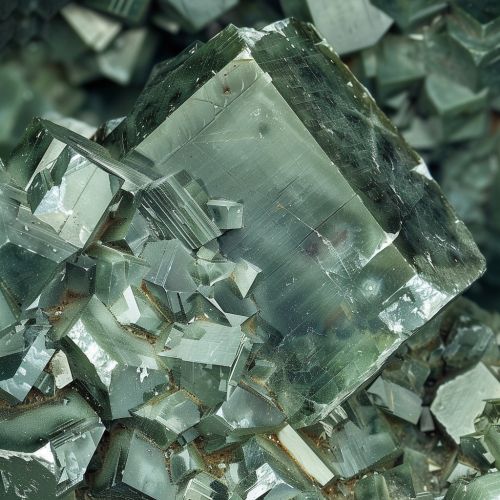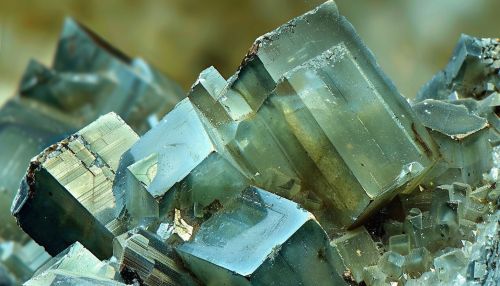Uranium-238
Introduction
Uranium-238 (U-238) is one of the most significant isotopes of uranium, a naturally occurring element found in the Earth's crust. It is the most abundant isotope of uranium, making up approximately 99.3% of natural uranium. U-238 is a non-fissile isotope, meaning it cannot sustain a nuclear chain reaction by itself. However, it plays a crucial role in the nuclear fuel cycle and the production of plutonium-239, which is used in nuclear reactors and weapons.
Physical and Chemical Properties
Uranium-238 has an atomic number of 92 and an atomic mass of approximately 238 atomic mass units (amu). It is a dense, silvery-gray metal that is weakly radioactive. U-238 has a half-life of about 4.468 billion years, making it useful for dating the age of the Earth and other geological formations.
Chemically, uranium is a highly reactive element that forms compounds with a variety of other elements. U-238 can exist in several oxidation states, with the most common being +4 and +6. In the +6 oxidation state, uranium forms the uranyl ion (UO2^2+), which is highly soluble in water and can form complexes with various ligands.
Occurrence and Extraction
Uranium-238 is found in various minerals, including uraninite, carnotite, and brannerite. These minerals are mined from the Earth's crust, and the uranium is extracted through a series of chemical processes. The most common method of extraction is leaching, where the uranium ore is treated with acid or alkaline solutions to dissolve the uranium, which is then precipitated and purified.


Applications
Nuclear Fuel Cycle
Uranium-238 is a critical component of the nuclear fuel cycle. Although it is not fissile, it can be converted into plutonium-239 (Pu-239) through neutron capture and subsequent beta decay. This process occurs in nuclear reactors, where U-238 absorbs a neutron to become uranium-239 (U-239), which then undergoes beta decay to form neptunium-239 (Np-239), and finally decays into Pu-239.
Pu-239 is a fissile material that can sustain a nuclear chain reaction, making it valuable for both nuclear power generation and nuclear weapons. The conversion of U-238 to Pu-239 is a key aspect of breeder reactors, which are designed to produce more fissile material than they consume.
Depleted Uranium
Depleted uranium (DU) is a byproduct of the enrichment process, where the fissile isotope uranium-235 (U-235) is separated from natural uranium. DU is primarily composed of U-238 and has a lower concentration of U-235 than natural uranium. Due to its high density, DU is used in various military and industrial applications, including armor-piercing projectiles, radiation shielding, and counterweights in aircraft.
Environmental and Health Effects
Uranium-238 is weakly radioactive, emitting alpha particles as it decays. Alpha particles have low penetration power and can be stopped by a sheet of paper or the outer layer of human skin. However, if U-238 or its decay products are inhaled or ingested, they can pose significant health risks due to their radiotoxicity and chemical toxicity.
Exposure to high levels of uranium can lead to kidney damage and an increased risk of cancer. Environmental contamination from uranium mining and milling can also impact ecosystems, leading to the bioaccumulation of uranium in plants and animals.
Isotopic Enrichment and Depletion
The process of isotopic enrichment involves increasing the concentration of U-235 in natural uranium to make it suitable for use in nuclear reactors or weapons. This is typically done using methods such as gas centrifugation or gaseous diffusion. The remaining uranium, which is depleted in U-235, is referred to as depleted uranium (DU).
Enriched uranium is essential for the operation of light-water reactors, which require a higher concentration of U-235 to sustain a chain reaction. In contrast, heavy-water reactors and some advanced reactor designs can use natural or slightly enriched uranium.
Uranium-238 in Geochronology
Uranium-238 is used in radiometric dating to determine the age of rocks and minerals. The decay of U-238 to lead-206 (Pb-206) is a well-understood process that occurs at a constant rate, allowing scientists to calculate the age of a sample based on the ratio of U-238 to Pb-206. This method, known as uranium-lead dating, is one of the most reliable techniques for dating geological formations and has been instrumental in establishing the age of the Earth.
Nuclear Waste and Disposal
The management of nuclear waste is a critical issue in the nuclear industry. Spent nuclear fuel contains a mixture of fission products, transuranic elements, and unreacted U-238. The long half-life of U-238 and its decay products means that nuclear waste remains hazardous for thousands of years.
Various strategies are employed to manage nuclear waste, including deep geological disposal, reprocessing, and transmutation. Deep geological disposal involves burying the waste in stable rock formations, while reprocessing aims to recover valuable materials from spent fuel. Transmutation involves converting long-lived isotopes into shorter-lived or stable isotopes through neutron bombardment.
